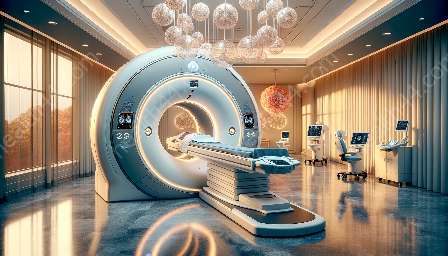Pulse oximeters are essential medical devices used to measure oxygen saturation in the blood and pulse rate. These devices play a crucial role in patient care, especially in conjunction with medical imaging devices and other medical equipment.
The Role of Pulse Oximeters in Healthcare
Pulse oximeters are non-invasive medical devices that provide important information about a patient's oxygen level and heart activity. They are commonly used in hospitals, clinics, and home care settings to monitor the respiratory status of patients with conditions such as asthma, chronic obstructive pulmonary disease (COPD), and sleep apnea. Additionally, pulse oximeters are widely used during surgical procedures and in critical care units to ensure that patients maintain adequate oxygen levels.
How Pulse Oximeters Work
Pulse oximeters operate by emitting light at two different wavelengths (typically red and infrared) through a translucent part of the patient's body, such as a fingertip or earlobe. A photodetector then measures the amount of light that passes through the tissue, allowing the device to calculate the oxygen saturation of the arterial blood. The pulse oximeter also determines the patient's pulse rate based on the changes in blood volume as the heart beats.
Modern pulse oximeters display oxygen saturation levels as a percentage and pulse rate in beats per minute. They are designed to provide accurate and reliable measurements, making them indispensable tools for healthcare professionals.
Compatibility with Medical Imaging Devices
Pulse oximeters are compatible with various medical imaging devices, such as MRI (magnetic resonance imaging) and CT (computed tomography) scanners. When patients undergo imaging procedures, it is essential to monitor their vital signs, including oxygen saturation and pulse rate. By using pulse oximeters in conjunction with medical imaging equipment, healthcare providers can ensure the safety and well-being of patients throughout the imaging process.
Integration with Other Medical Devices and Equipment
In addition to medical imaging devices, pulse oximeters can be integrated with various other medical equipment to enhance patient care. They can be connected to patient monitoring systems, anesthesia machines, and ventilators, allowing healthcare providers to continuously assess a patient's respiratory status and react promptly to any changes.
Furthermore, advancements in medical technology have led to the development of portable and wireless pulse oximeters, which offer greater flexibility and convenience in various clinical settings. These portable devices can be used in ambulatory care, emergency medical services, and home healthcare, enabling consistent monitoring of patients' oxygen levels and pulse rates outside traditional healthcare facilities.
The Future of Pulse Oximetry
As technology continues to evolve, pulse oximeters are likely to become even more advanced, providing additional features and connectivity options. Integration with electronic health record systems and telemedicine platforms will further improve the accessibility and usability of pulse oximetry data, facilitating seamless communication between healthcare professionals and patients.
Conclusion
Pulse oximeters are indispensable tools in modern healthcare, playing a vital role in patient monitoring and care. Their compatibility with medical imaging devices and integration with other medical equipment make them essential components of the overall healthcare ecosystem. As medical technology advances, pulse oximeters will continue to adapt and improve, ensuring that patients receive the best possible care and outcomes.


